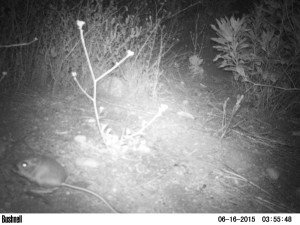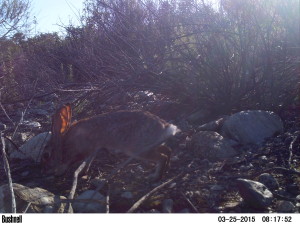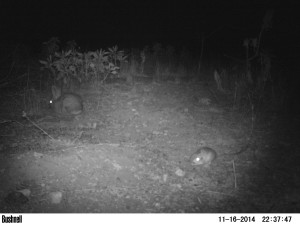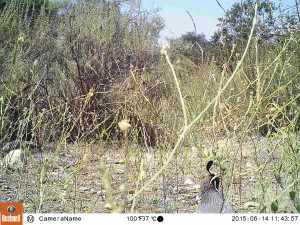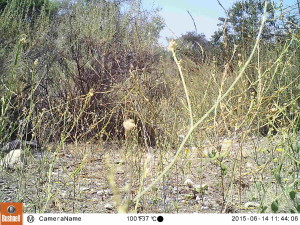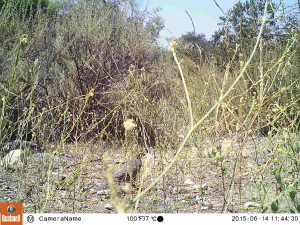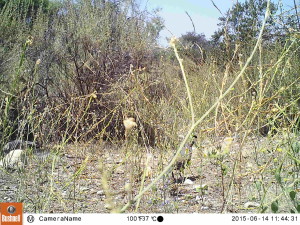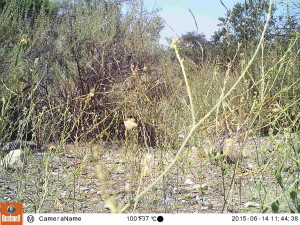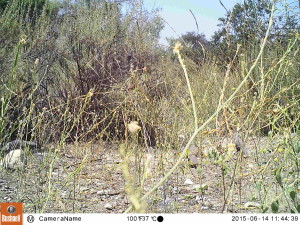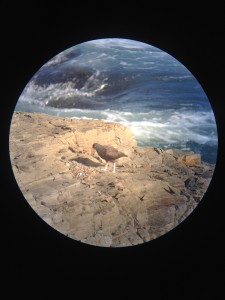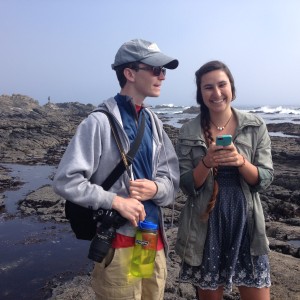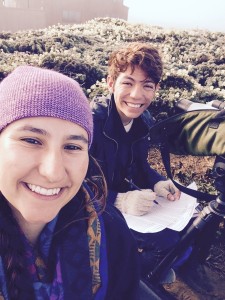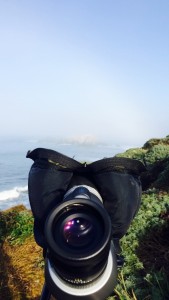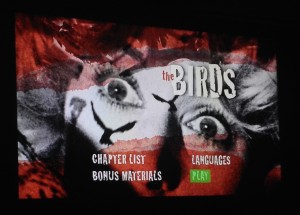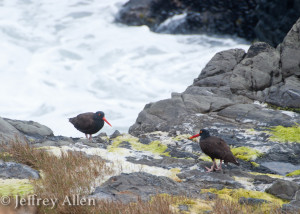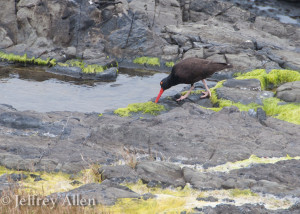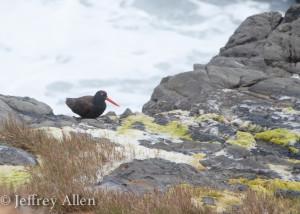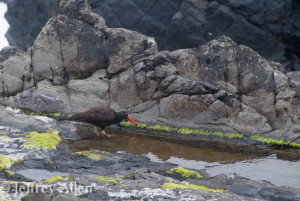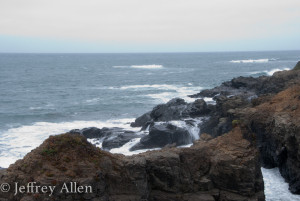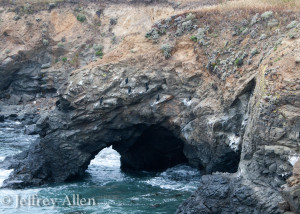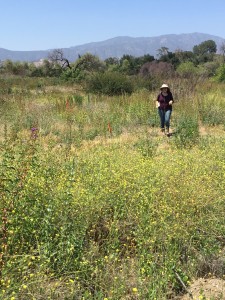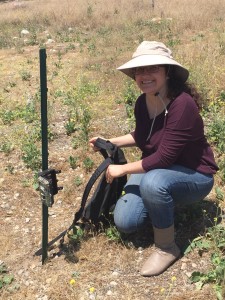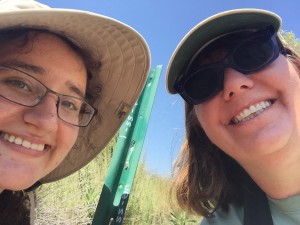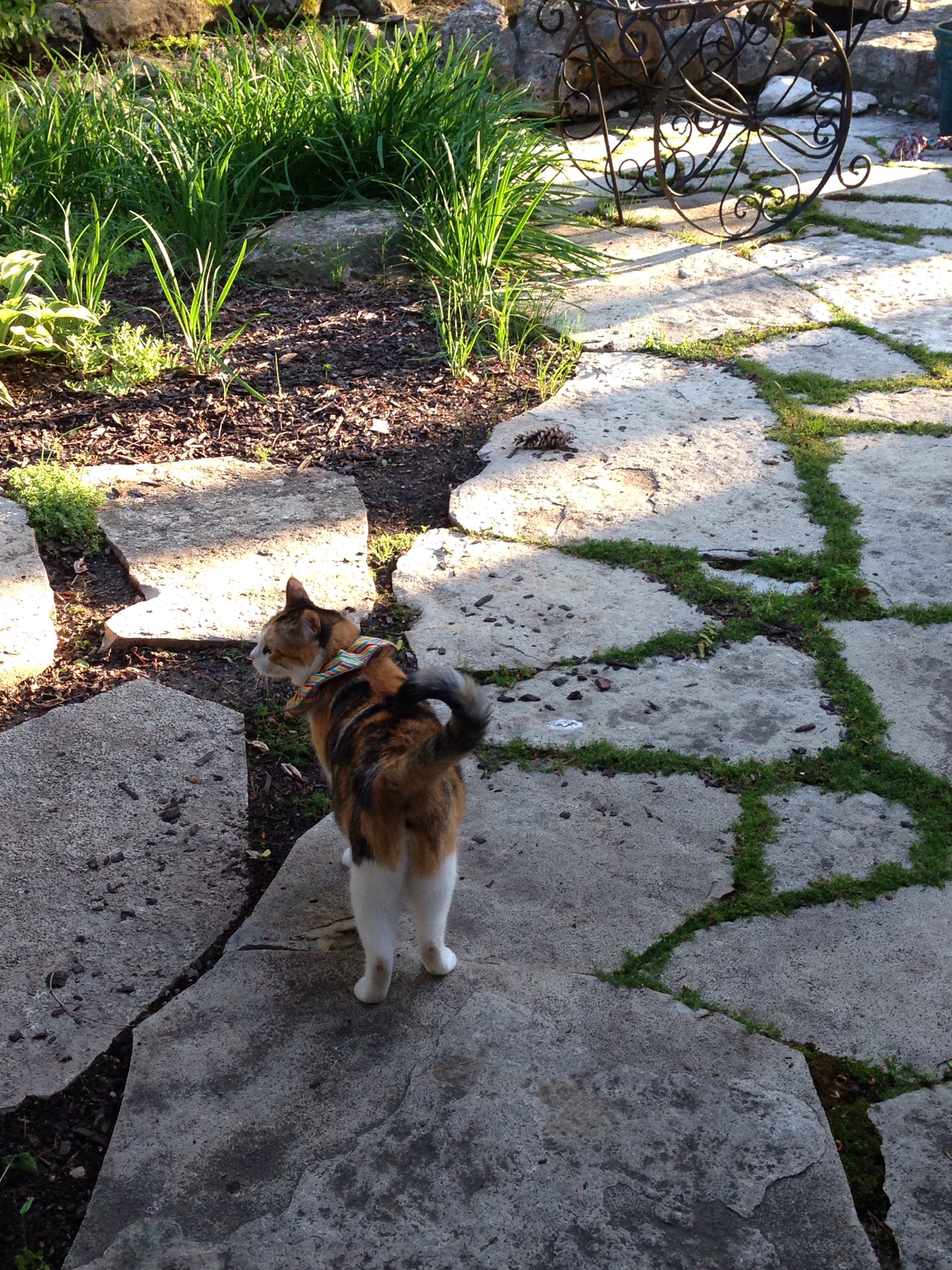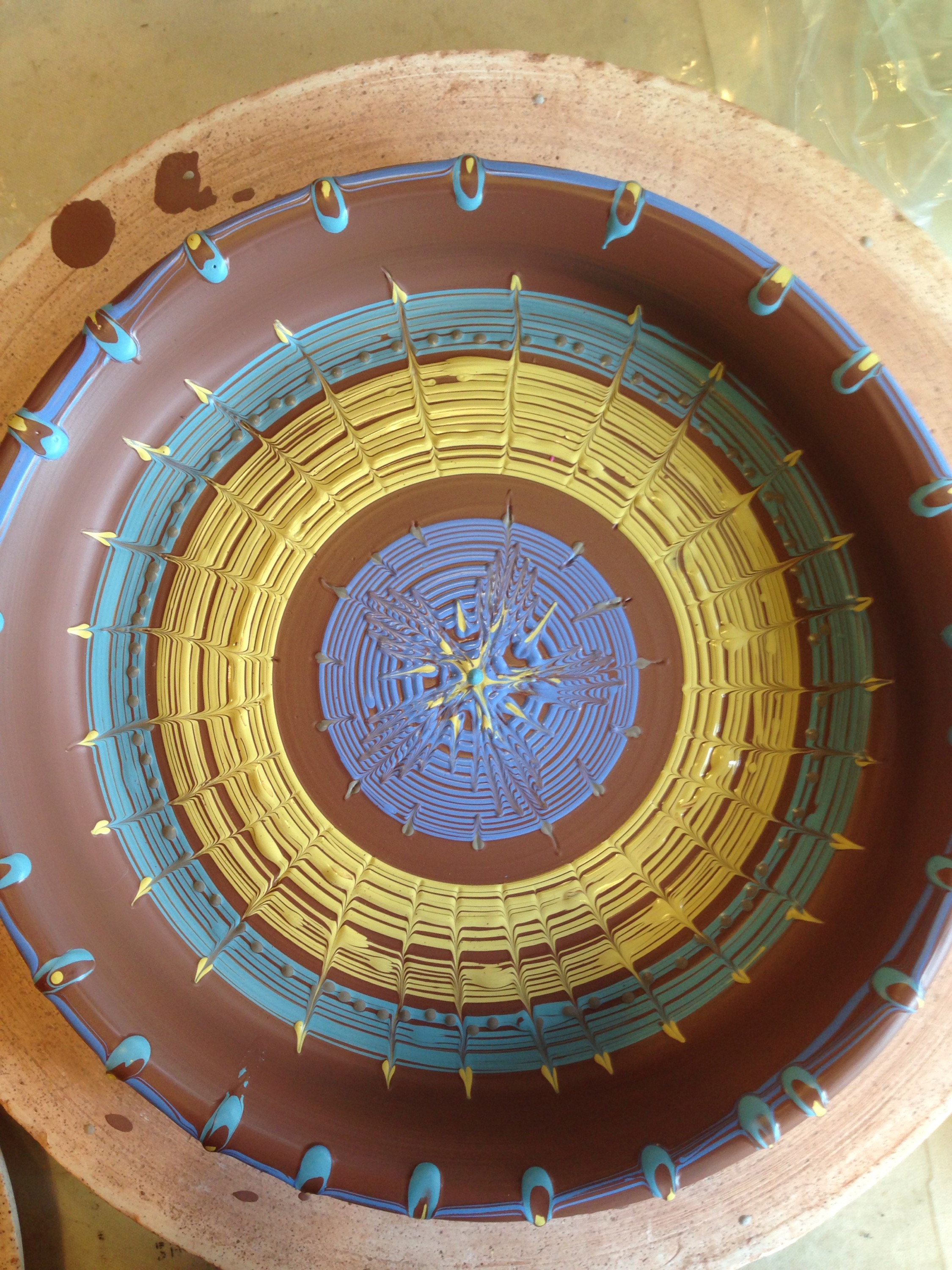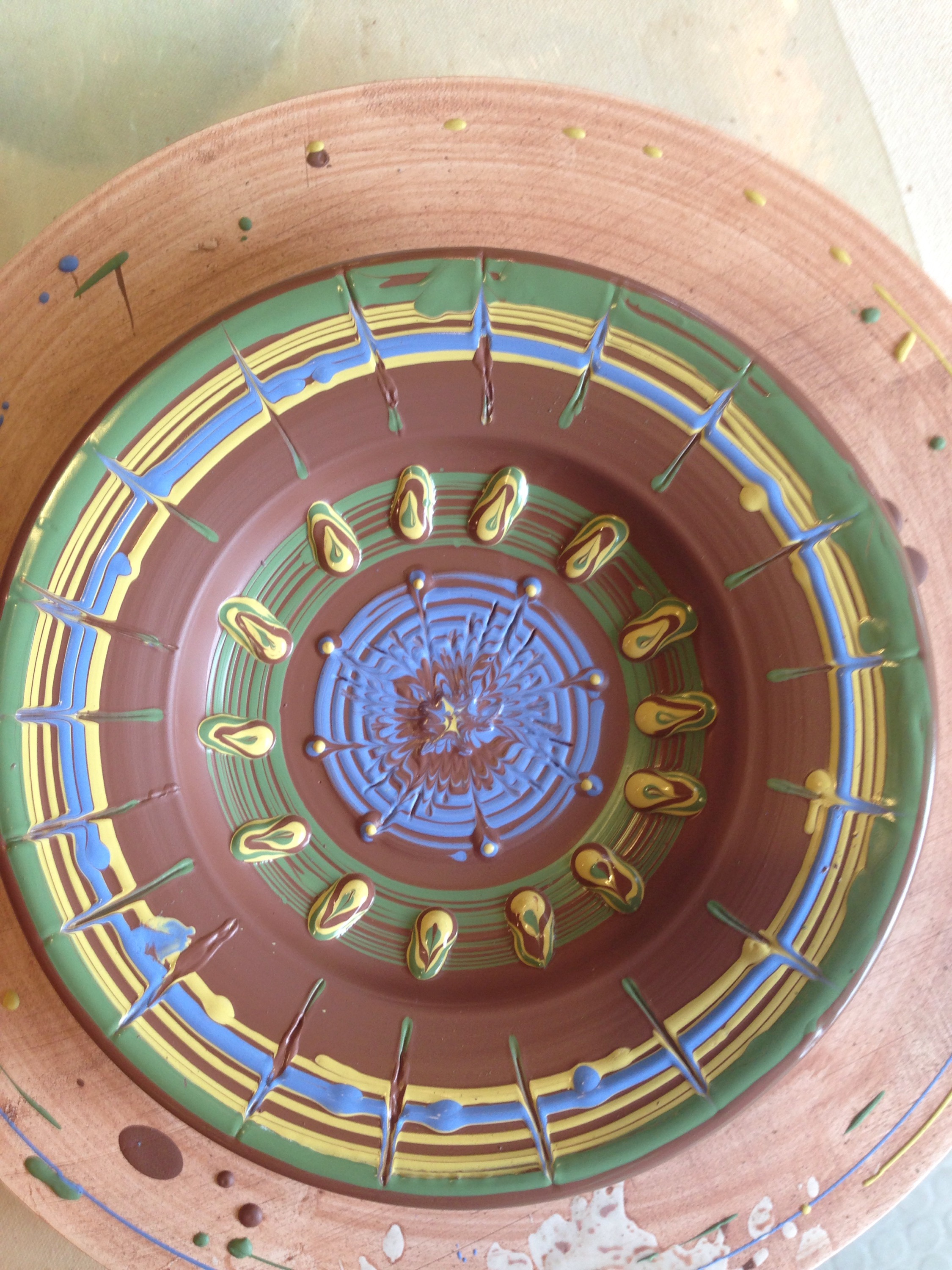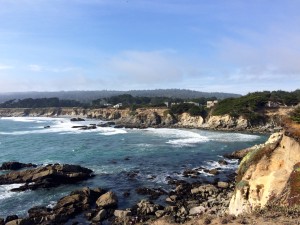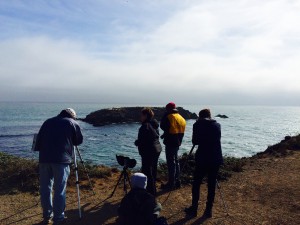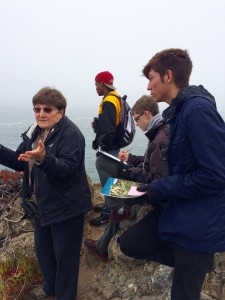It’s been a week since we first arrived in Sea Ranch, and I can’t quite believe how much we’ve already done. It’s taken a little time to get into the swing of things, but by next week it seems we’ll be settling into a steady rhythm. While the beginning is still fresh in our minds I thought now would be a good time to reflect on how we’ve started, and maybe talk a little of where we are and where we’re going.
The reality of this experience really only set in for me once the plane was lifting from the tarmac, and I could see Missoula become small through the foggy airplane glass. The sun shone bright in the chill mountain air, and as the mountains I knew so well passed from my sight I became excited for what lay ahead.
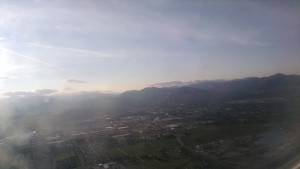
view over Missoula, MT
I knew we had reached San Francisco when I saw the fog on the ground below us. We circled around to land near the edge of it, and I got off the plane ready for anything. Leo picked me up, and after we went to get Jeffrey we were on our way.
After a long winding drive along the edge of the coast, we finally arrived, where we were warmly greeted by Bryant and Diane Hichwa, and Bridgett, who was certainly our most eager greeter.
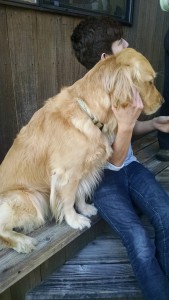
Bridget saying hi to Leo
We took some time to get our things in order, and wind down from our travels. The Hichwa’s keep a beautiful home, and we were thankful to them for letting us into their space for a time. The view was fantastic, and I could have spent hours simply staring out to the ocean, watching birds play across the trees.
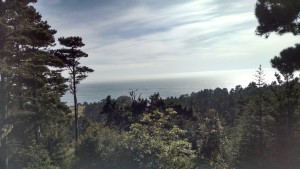
view from the Hichwa’s porch
When Nicole arrived we started to discuss what we would be doing over the next few days, and what all we needed to cover before we would start going out on our own later in the week. Jim Weigand, the California state biologist for the BLM, was going to meet up with us the next day. But that was for tomorrow, and after some dinner we settled in to rest.
The next few days passed in a blur of scopes and sea birds. That first morning we got up to go explore the coast with Diane, going to Black Point where we saw the nests of oystercatchers, gulls, and the handsome pigeon guillemots. Pelicans flew overhead in formation while we familiarized ourselves with the forms we would be using for the rest of the summer.
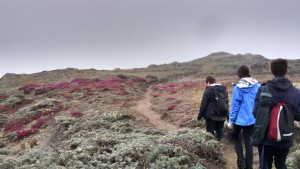
Diane leading us to Black Point
When Jim arrived we began to look at the nests of the Pelagic Cormorants on the bluff, and started what will become our early morning tradition of data collection from both a northern and southern perspective of Gualala Point Island. We were formally introduced to the western gull and the black oystercatcher, as well as the several varieties of cormorants. We learned a lot about these birds, in a short amount of time, but by the end I felt prepared for our studies. Already we have detailed the nest location of over twenty pelagic cormorants, and investigated the nest locations of many black oystercatchers, and conducted multiple surveys on Gualala Point Island. As we’ve begun to really get into the substance of our work I have come more and more to appreciate the beauty of these birds, and am eager to learn more about how they live and what their roles are within the greater ecosystem. Jim and Diane have been wonderful teachers so far, and I have no doubt they will continue to be valuable sources of knowledge and wisdom as our study progresses.
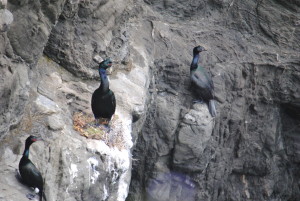
Pelagic cormorants on the cliff-side
This really has been an amazing week, and the amount we have learned is astonishing. The details of the Breeding Seabird Survey, Nest Survey, Mobile Chick Survey, and the pelagic cormorant feeding study have been informative in the details of their construction, as well as working through the methods we will employ in studying the black oysteractchers. Already I have a better understanding of what it really means to conduct field work, and I am excited to engage in this project, and develop a truly meaningful understanding of these seabirds and their place here. Perhaps we can find some good answers, to questions both unknown and yet to be asked. In the meantime I will enjoy the mystery of this beautiful place, and revel in each new sight.
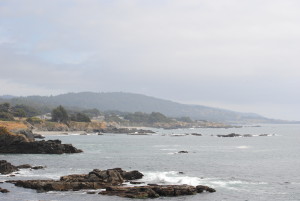
The coast along Sea Ranch
At some point we can get more into the details of what exactly we will be doing over the next few months, but for now it is late and I must say goodnight. Till next time!
-Kyle Jensen

